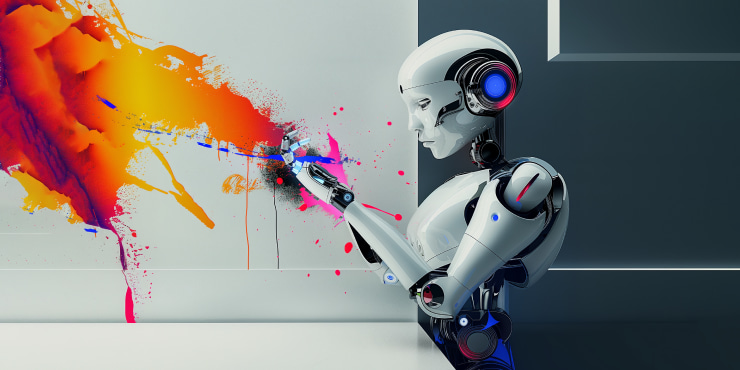In the rapidly evolving world of digital design, deep learning has emerged as a transformative force. Deep learning in design tools is reshaping how designers conceptualize and execute their creative visions. By harnessing the power of artificial intelligence, designers can now explore new frontiers in creativity and efficiency.

The Rise of Deep Learning in Design
The integration of deep learning into design tools marks a significant shift in the creative industry. With AI-driven algorithms, designers can automate repetitive tasks, generate innovative ideas, and enhance the overall quality of their work. This technology is not just a trend; it’s a revolution in the design landscape.
Understanding Deep Learning
Deep learning is a subset of machine learning that uses neural networks to analyze patterns and make decisions. In the context of design, it enables tools to learn from vast datasets of creative work, allowing them to suggest design elements, color schemes, and layouts that align with current trends.
Applications of Deep Learning in Design Tools
Automating Repetitive Tasks
One of the most significant benefits of deep learning in design tools is the automation of mundane tasks. Designers can rely on AI to handle tasks such as resizing images, formatting text, and even generating preliminary layouts. This frees up valuable time for more creative and strategic work.
Enhancing Creativity
AI-powered design tools are not just about efficiency. They also inspire creativity by providing designers with a wealth of ideas and suggestions. For instance, tools like Canva’s Magic Design use AI to suggest innovative design elements that align with a project’s goals and aesthetics.
Personalizing User Experience
Deep learning allows design tools to adapt to individual user preferences. By analyzing user behavior, these tools can offer personalized suggestions, making the design process more intuitive and enjoyable. This personalization is crucial for engaging digital creators and enhancing their productivity.
Challenges and Opportunities
Overcoming Technical Hurdles
While the benefits of deep learning in design tools are immense, there are technical challenges to address. Ensuring that AI algorithms are accurate and reliable requires extensive training and data analysis. However, as technology advances, these hurdles are being progressively overcome.
Expanding Creative Boundaries
The opportunities presented by deep learning are vast. Designers can push creative boundaries by experimenting with new styles and techniques. AI-driven tools provide a platform for innovation, enabling designers to explore uncharted territories in digital art and design.
Case Studies: Success Stories
AI for Artistic Expression
Design tools leveraging AI have transformed artistic expression. A prime example is the use of AI in generating unique and captivating artworks. By analyzing existing art pieces, AI can create new compositions that blend various styles and motifs, offering artists a fresh perspective on their work. For more insights, visit our article on AI for Artistic Expression.
Responsive Design
AI’s influence extends to responsive design, where it predicts user interactions and adapts layouts accordingly. This ensures that websites and applications provide seamless user experiences across different devices. Learn more about this in our feature on AI for Responsive Design.
The Future of Deep Learning in Design
Predicting Design Trends
As AI continues to evolve, it will play a crucial role in predicting design trends. By analyzing vast amounts of data, AI can identify emerging patterns and styles, enabling designers to stay ahead of the curve. Discover more about how AI is shaping future trends in our article on How AI Predicts Design Trends.
Integrating Neural Networks
Neural networks are at the heart of deep learning in design tools. They enable the creation of complex models that can understand and replicate human creativity. These advancements will further bridge the gap between human intuition and machine precision. Explore the role of neural networks in our post on Role of Neural Networks in Design.
Conclusion
In conclusion, deep learning in design tools is revolutionizing the way designers work. By automating tasks, enhancing creativity, and personalizing user experiences, AI is redefining the boundaries of design. As technology continues to advance, the potential for innovation in the design industry is limitless. Embracing these changes will empower digital creators to push the envelope and achieve new heights in their creative endeavors.

FAQs
How does deep learning enhance design tools?
Deep learning enhances design tools by automating repetitive tasks, providing creative suggestions, and personalizing user experiences.
What are the challenges of integrating AI in design?
The challenges include ensuring the accuracy and reliability of AI algorithms, as well as overcoming technical hurdles related to data analysis and training.
Can AI predict future design trends?
Yes, AI can predict future design trends by analyzing large datasets and identifying emerging patterns and styles.







